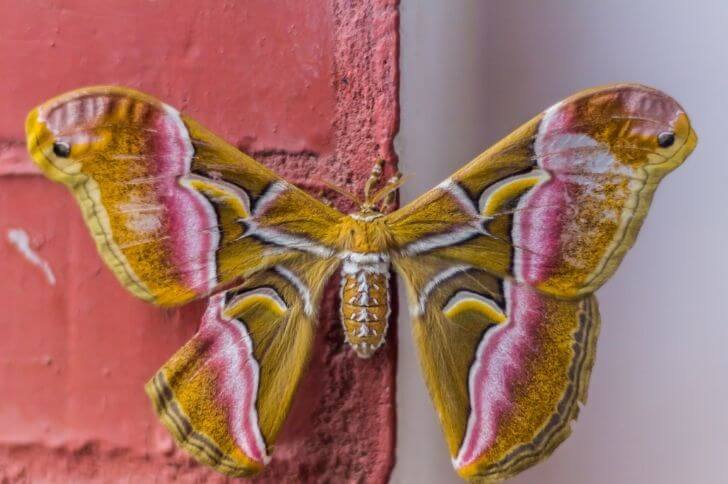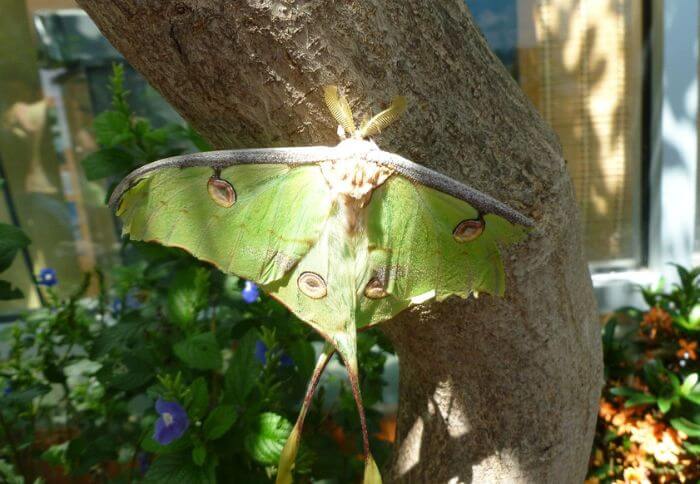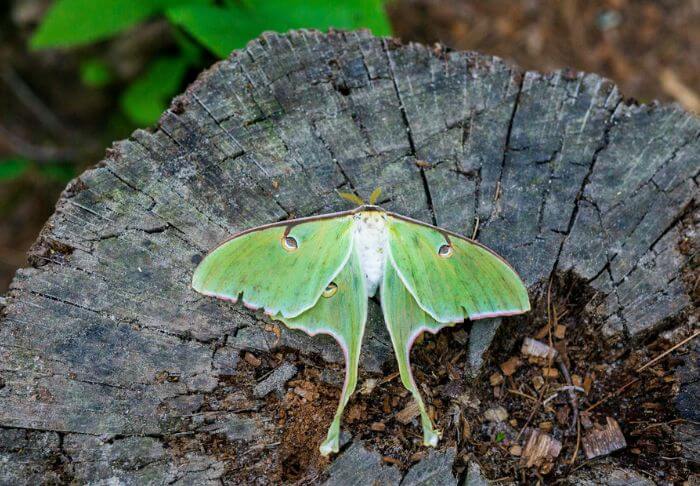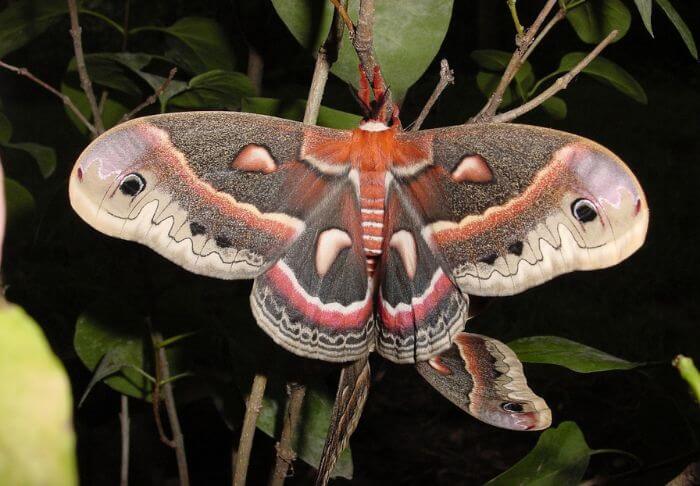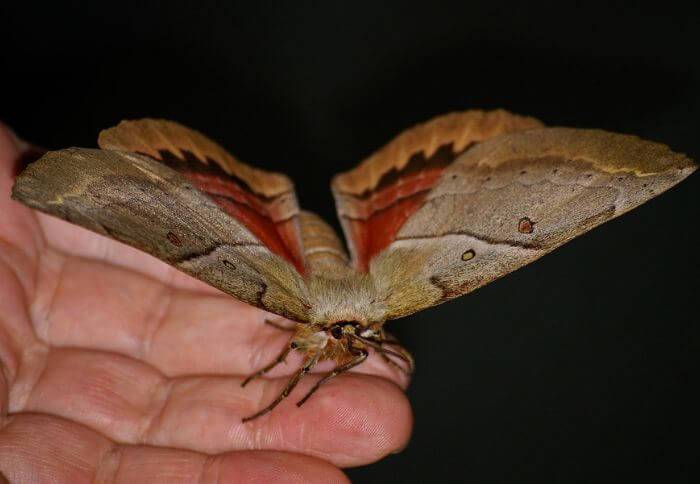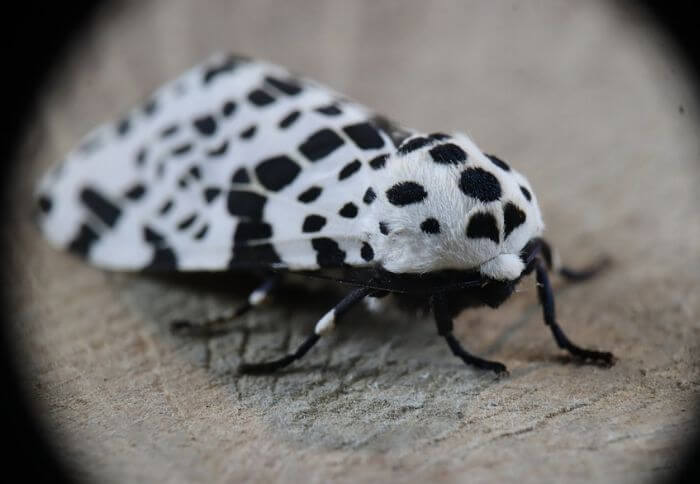Where Do Moths Go During the Day?
Moths are fascinating creatures that often go unnoticed during the day, overshadowed by their more flamboyant counterpart, the butterfly. However, moths play a crucial role in ecosystems as both pollinators and food sources for other animals.
With around 160,000 species worldwide, moths come in a dazzling array of shapes, sizes, and colors. Their unique and intricate patterns make them a delight to observe and study.
Where do moths go during the day? (Nocturnal Nature)
Nocturnal nature and the common perception of moths have long been a source of fascination and mystery. Despite their mostly misunderstood reputation, moths play a crucial role in ecosystems as important pollinators and a food source for other creatures.
Their innate attraction to artificial light has often led to misconceptions about their behavior, with many assuming that they are solely creatures of the night.
In reality, moths are complex insects with an incredible diversity of species, each adapted to different environments and habits. While some may be more active during the day, many species retreat into hidden locations such as tree bark or dense foliage when the sun is out.
This adaptive behavior allows them to avoid predators and maintain their energy levels for nighttime activities such as foraging and reproduction. By shedding light on these fascinating aspects of moth behavior, we can begin to appreciate the intricate role they play in our natural world.
Daytime Behavior of Moths
Resting locations
Resting locations play a crucial role in the daily survival of moths. While many may envision moths simply hunkering down under leaves or within the folds of tree bark, it’s fascinating to learn that these nocturnal creatures also seek out resting spots in less predictable places.
From the crevices of buildings to the undersides of man-made structures such as bridges and roof eaves, moths demonstrate a remarkable adaptability in their choice of resting locations.
This affords them protection from predators during daylight hours, but also highlights their ability to navigate urban environments in unexpected ways.
In addition to traditional natural hiding spots, moths have been found nestled within intricate webs spun by spiders, unearthing an interesting dynamic between predator and prey.
Their willingness to take refuge amidst potential dangers raises questions about their survival strategies and reveals a complex tapestry of interactions within the natural world.
Camouflage
Moths have perfected their camouflage skills, utilizing a combination of coloration and texture to disappear from plain sight during daylight hours.
From the intricate patterns that mimic tree bark or lichen to the nuanced shading that matches the surrounding foliage, moths have evolved an impressive array of hiding spots.
One remarkable aspect of moths’ camouflage is their ability to adapt their appearance based on their chosen resting place.
Some species can adjust the color and pattern of their wings depending on whether they settle on tree trunks, leaves, or even rocks.
This specialization demonstrates a level of sophistication in their survival strategies, allowing them to evade potential predators with ease.
Daytime activities during various life stages
The daytime activities of moths vary across different life stages, offering a fascinating glimpse into their behavior.
During the larval stage, moth caterpillars can be found munching on leaves and other plant material in search of nourishment. Their voracious appetite allows them to grow and develop, preparing them for the next stage of their lifecycle.
As moths transition into the pupal stage, their daytime activities undergo a significant shift. Encased within a protective cocoon or chrysalis, these dormant creatures remain hidden from view during daylight hours as they undergo metamorphosis.
This transformative period is essential for their development as they prepare to emerge as fully-formed adult moths.
Once they reach adulthood, moths become more active during the day than one might expect. Contrary to popular belief that moths are exclusively nocturnal creatures, many species are actually diurnal.
These day-flying moths engage in vital activities such as foraging for nectar from flowers and seeking out mates under the warmth of the sun.
Related read: Check large moths of Colorado
Reasons for Daytime Inactivity in some moths
- Predator avoidance
- Energy conservation
- Environmental factors
- Temperature
- Light sensitivity
Physiological changes during resting periods in moths
As moths settle down for rest, their body temperature also drops, which is known as torpor. This reduction in metabolic activity helps conserve energy during periods of inactivity.
One significant physiological change that occurs during resting periods is the suppression of feeding behavior.
Moths typically feed on nectar or other sources of carbohydrates to fuel their flight and daily activities. However, during rest, they cease feeding altogether to minimize energy expenditure.
In addition to reduced feeding, moths also experience a decrease in muscle activity while at rest. The wings that are usually fluttering rapidly during flight come to a standstill, allowing the muscles responsible for wing movement to relax and recharge.
Another notable change is the modification of sensory perception. Moths rely heavily on their sense of smell for locating food sources and potential mates.
During resting periods, there is a decreased sensitivity to olfactory cues as the moth’s focus shifts more towards conserving energy rather than actively seeking out resources.
Moths in Different Habitats
Urban environments
Urban environments have a fascinating effect on the behavior of moths during the day. Unlike their rural counterparts, urban moths often find refuge in man-made structures such as buildings, bridges, and even vehicles.
The abundance of artificial light at night can attract and disorient moths, causing them to seek shelter during daylight hours. Additionally, urban areas offer a plethora of hidden spaces where moths can rest undisturbed, contributing to their survival in these dynamic settings.
The intricate relationship between moths and urban environments is also influenced by human activity. Construction projects provide new havens for these nocturnal creatures to seek shelter during the day.
Furthermore, streetlights and neon signs create unique microhabitats that lure moths into unexpected locations within the cityscape.
Understanding this complex interplay between moths and urban environments sheds light on how these often-overlooked insects adapt to thrive in modern society.
Moths in Agricultural landscapes
Moths, often overlooked in the bustling world of agricultural landscapes, play a crucial role in ecosystem balance and pollination.
Within these vast fields, moths seek out nectar-rich flowers during the day, contributing to the vital process of pollination that sustains crop production.
Additionally, many species of moths act as natural predators to common agricultural pests such as aphids and caterpillars. Their presence offers a sustainable and environmentally friendly alternative to chemical pest control methods, benefitting both farmers and the ecosystem.
Furthermore, moths’ ability to adapt and thrive within diverse environments allows them to utilize agricultural landscapes as breeding grounds for their future generations.
Farms provide an abundance of food sources for moth larvae while offering protection from predators—a luxury that wild habitats may not always guarantee.
This symbiotic relationship between moths and agriculture underscores the intricate connections between seemingly disparate elements within our natural world.
Human Interaction and Moth Behavior
Impact of artificial lights on moths
The impact of artificial lights on moths has been a topic of growing concern in recent years. Studies have shown that the presence of artificial lights can disrupt the natural behavior of moths, leading to negative consequences for their populations.
The phenomenon known as light pollution can attract moths to areas where they are more vulnerable to predators, and disrupt their normal patterns of feeding and reproduction.
Additionally, exposure to artificial lights can interfere with their ability to navigate using celestial cues and disrupt their circadian rhythms.
Exceptional Cases of Daytime Activity
Moth Species with diurnal behavior
Moths are generally known for their nocturnal behavior, but there exists a fascinating group of moth species that have evolved to display diurnal behavior.
These day-flying moths have adapted to capitalize on the daytime hours, taking advantage of the abundance of sunlight to forage and mate.
One such example is the hummingbird hawk-moth (Macroglossum stellatarum), which is often mistaken for an actual hummingbird due to its rapid wingbeats and hovering flight.
These diurnal moths display remarkable agility and are often seen visiting flowers during daylight hours.
The evolution of diurnal behavior in certain moth species has led to intriguing dynamics in their interactions with other organisms.
For instance, some diurnal moths have developed exquisite mimicry techniques, resembling bees or wasps in both appearance and behavior as a defense mechanism against predators.
Additionally, the adaptation to daylight activity has opened up new ecological niches for these moth species, allowing them to form unique relationships with daytime pollinators and plants.
This shift from nocturnal to diurnal behavior offers a captivating insight into the diversity and adaptability of the natural world, reminding us of the complex interplay between organisms within ecosystems.
source:
Passionate animal photographer with an unwavering love for capturing the essence and beauty of our furry friends.
With over five years of experience in the field, I have developed a unique ability to connect with animals on a deeper level, allowing me to create stunning and captivating images that truly reflect their personality.
Let’s collaborate to capture unforgettable moments that celebrate the unique bond between humans and animals!
